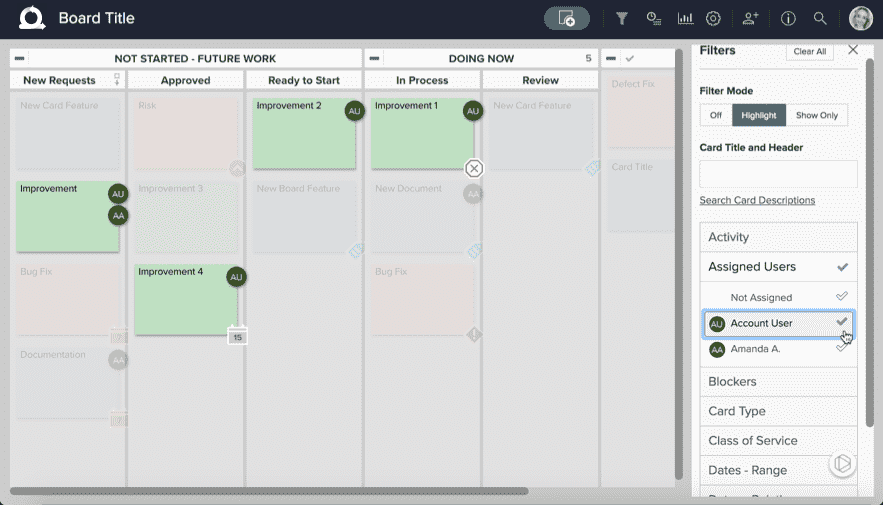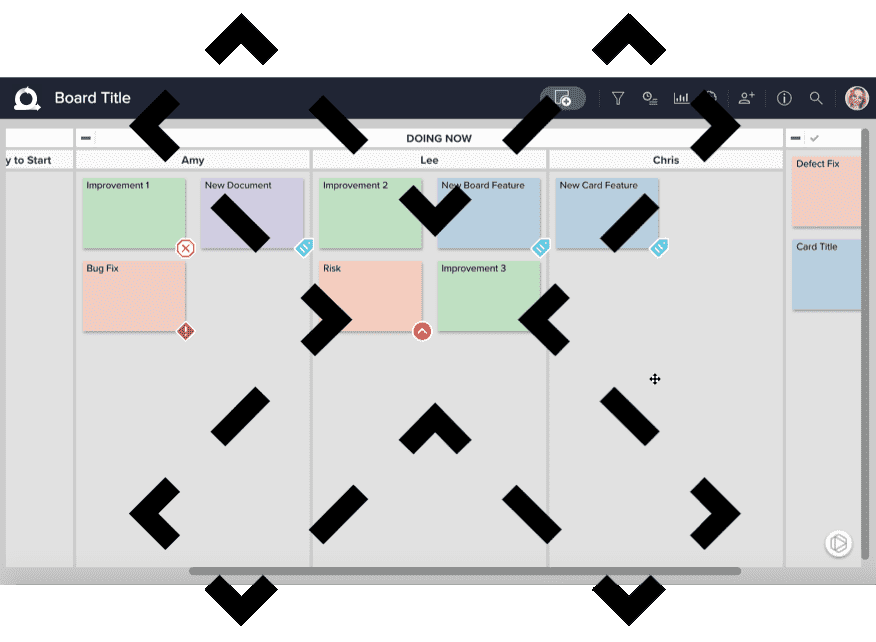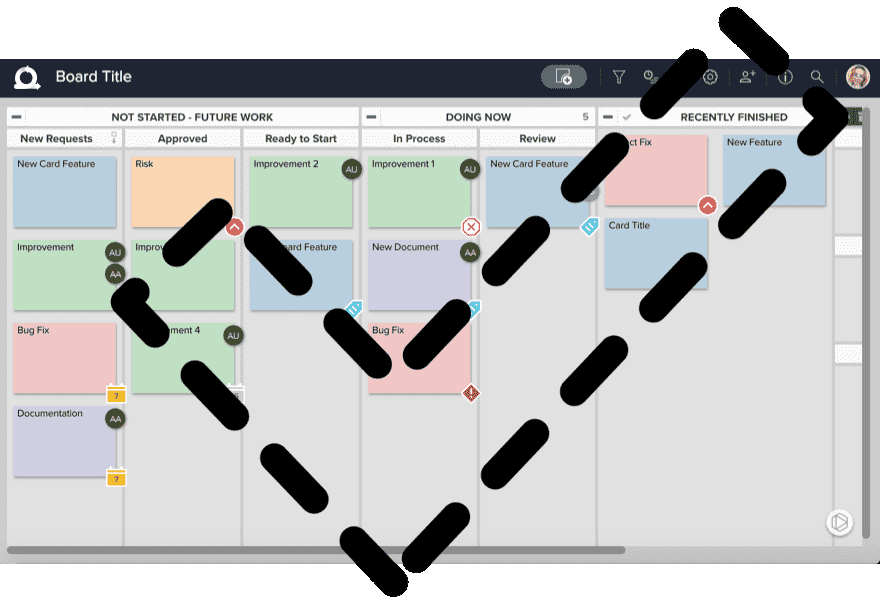How to Conduct a Board Review
The main goal of Kanban is to make issues rise to the surface. Visualizing our work via AgilePlace’s Kanban boards gives us a way to better see and manage the flow of that work as it moves through our process. We then use work-in-process limits and the concept of a pull system to constrain how much work we tackle at one time. These constraints keep our tendency to ignore our pain points in check by forcing them to the surface of our visualization, allowing us to find ways to solve them. But, in order to insure that your board can help you identify these problems, sometimes you need to reevaluate your board setup.
Your board should accurately represent your work
To make sure that your board is helping to illustrate and alleviate problems in your workflow, it’s important to conduct periodic board reviews.
To get started, walkthrough the current board structure and settings with your team and ask yourself: “Does this board accurately reflect my team’s work?” This question refers to both the workflow that cards move through and the work reflected by the cards themselves.
Consider the following questions to help you determine if your work is really being reflected on your board.
Do your card types represent key aspects of the work you do?
Card types are the most visible way to differentiate the work managed in your system. So, they should be used to segment your work into different buckets based on something really important. If you’re having a hard time understanding how to determine these segments, think about the the types of work that need to be measured independently, for instance, project work versus daily support requests. Make sure these choices are relevant to your needs and use your metrics as your guide.
Helpful tip for how card types can help you visualize your work:
- You can use different card types to filter the board for specific types of work and even to filter analytics for specific types of work. This can help you to see how related items are flowing through your system and get a better understanding of the various kinds of work your team handles.
- Avoid having more than seven card types as when you have more, it is harder to interpret the colors at a glance. Instead, look at using other indicators, like icons, to differentiate within a specific card type.
Does the board layout accurately reflect your process?
Sequential, vertical lanes generally represent steps in a process, while horizontal lanes generally represent parallel processes. Start with three basic, vertical lanes -- Not Started, In Process, and Complete -- and expand from there as you understand your process.
Some helpful tips for representing your process:
- If you find yourself needing additional information/visibility into any step of your workflow, consider breaking it down further.
- If you need to visualize a “pre-start” process, you can build out the lane structure in the Not Started lane just like the In Progress lane. This will help your analytics accurately reflect your workflow.
- If you find yourself wanting to move cards back and forth between two lanes, consider merging them and having the column represent the entire cycle.
- If your team plans future work in sprints, releases, etc: these can be represented by vertical lanes in the Not Started lane or you can have a future planning board for grooming a longer term backlog and move cards to the team board when you desire.
Is all of your team’s work easy to locate and view?
Work on a Kanban board should represent the collective work that a team has to complete. Breaking down work by role or project, into separate boards, can create information silos if not managed carefully. By showing all of the work on a single board, teams have a clearer view of what’s going on with interconnected projects and they can work together to resolve inter-project conflicts. In short, they can work as a team to complete the collective body of work. Don’t forget that you can filter busy boards!
Helpful tips for decluttering work on a busy board:
- You can use board filters to show work for a single project no matter how many cards are on a board if you are using an aspect of the card (tags, card title/headers, parent cards, custom icons) to differentiate by projects.
- Assign users to cards they are actively working on. This allows them to use the filter to know what cards they are assigned to, and it also allows managers of the board to look at the distribution report and assigned Users report to understand the team’s workload
Does the board design encourage the behaviors you desire?
How you name lanes (both horizontal and vertical) can impact how people interact with the work residing in those lanes. If you name lanes by person, you are subtly telling other people to stay in their lane and focus on their work rather than breaking out to help with something that gets blocked or stagnant. Essentially you are building a board design that focuses on the individual and their personal productivity instead of the productivity of the entire team.
I’ve heard more than a few worrying examples of team members being concerned about how they will be perceived if they stop working on the cards in their lane in order to help out another team member. People optimize their behavior to make the visualization look good. If you are a team that needs to work together to complete work, make sure your board design doesn’t get in the way.
Assigning users to cards allows each team member to track their individual work items while still allowing them to get the big picture of the team's work as a whole.
Continuous improvement is key
These are by no means the only questions you should ask when conducting your board reviews, but by asking yourself these key questions as you and your team walk through your board, you can readjust your board layout and settings as needed to continuously improve your process over time. You may find that you and your team feel the need to adjust the review process each time you review the board. That’s great! Just like your work process, your review process should be ever-evolving and always improving.
If you leave with one key tip, let it be this one: Keep it simple when you start out, and add complexity only as needed. By periodically reviewing your board, you can identify areas of adjustment needed to help you and your team to improve the speed and efficiency of value delivery. You’ll be able to more quickly identify potential problems in your workflow and identify ways to solve them. Get started by using the above questions to conduct a board review with your own team.




